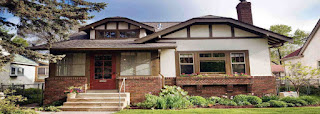Common Electrical Problems in Older Homes and How to Address Them
Older homes often possess a charm and character that newer constructions lack. However, along with their unique architectural features, older homes may also come with outdated electrical systems that pose safety hazards and reliability issues.
In this article, Les Entreprises Electriques EB explore some common electrical problems found in older homes and discuss effective strategies for addressing them to ensure the safety and functionality of the electrical system. https://leeeb.ca/
1. Outdated Wiring:
- Many older homes were built with outdated wiring systems such as knob and tube or aluminum wiring, which may not meet current electrical codes and safety standards.
- Solution: Consider upgrading the wiring to modern copper wiring, which is safer and more reliable. Hire a qualified electrician to assess the condition of the wiring and perform any necessary upgrades to ensure compliance with current regulations.
2. Overloaded Circuits:
- Over time, the electrical demands of modern appliances and electronics have increased, putting a strain on older electrical systems designed for lower power loads.
- Solution: Avoid overloading circuits by distributing the electrical load evenly across multiple circuits. Consider adding additional circuits or upgrading the electrical panel to accommodate the increased demand for power.
3. Faulty Outlets and Switches: https://leeeb.ca/
- Worn-out outlets and switches are common in older homes and can pose safety hazards such as electrical shocks and fires.
- Solution: Replace old, damaged outlets and switches with new, tamper-resistant models that meet current safety standards. Ensure that all electrical components are properly grounded to prevent electrical faults.
4. Lack of Ground Fault Circuit Interrupters (GFCIs):
- GFCIs are designed to protect against electrical shocks by quickly shutting off power in the event of a ground fault or short circuit. Older homes may lack GFCI protection in areas prone to moisture such as kitchens, bathrooms, and outdoor outlets.
- Solution: Install GFCIs in all required locations to enhance electrical safety and reduce the risk of electrical shocks, especially in areas exposed to water.
5. Overhead Service Lines:
- Older homes with overhead service lines may be at risk of damage from weather conditions such as high winds, storms, and falling branches.
- Solution: Inspect overhead service lines regularly for signs of damage or wear and tear. Trim trees and vegetation near power lines to prevent interference and reduce the risk of accidents.
6. Insufficient Electrical Capacity:
- Older homes may have inadequate electrical capacity to meet the demands of modern electrical appliances and devices, leading to frequent tripped circuit breakers and power outages.
- Solution: Upgrade the electrical service panel to accommodate higher electrical loads. Consult with a licensed electrician to determine the appropriate size and capacity for the electrical panel based on your home's needs.
At the end , addressing common electrical problems in older homes is essential to ensure the safety, reliability, and functionality of the electrical system. By identifying and resolving issues such as outdated wiring, overloaded circuits, faulty outlets, and insufficient electrical capacity, homeowners can mitigate safety hazards and improve the overall performance of their electrical systems.
Consulting with a qualified electrician is recommended to assess the condition of the electrical system and implement effective solutions tailored to the specific needs of the home. With proper maintenance and upgrades, older homes can continue to provide comfort and security for years to come. https://leeeb.ca/

.2003301423550.jpg)

.jpeg)

.jpeg)
.jpeg)
.jpeg)
.jpeg)
Comments
Post a Comment